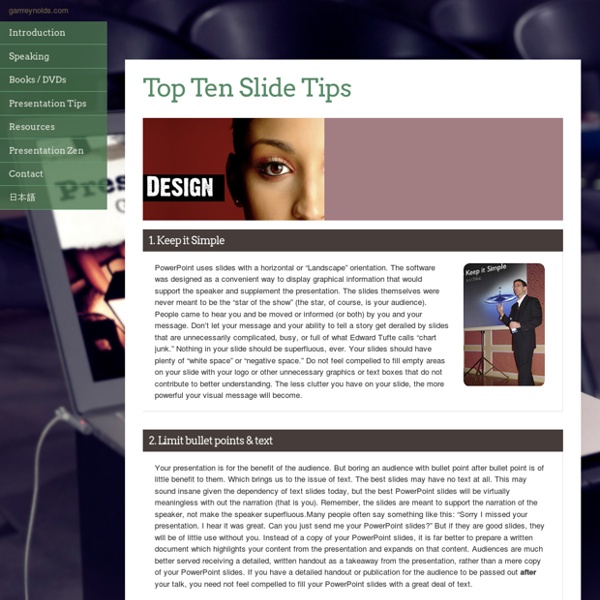21 Great Examples of PowerPoint Presentation Design [+ Templates]
We can all agree there's more than one way of doing something. For example, some people default to the "loop, swoop, and pull" method when they tie their shoes, while others swear by the "bunny ears" technique. Either way you swing it, your shoes get tied, right? The trouble is, in some areas of life, different approaches don't always return the same results. → Free Download: 4 PowerPoint Presentation Templates [Access Now]
Bad PowerPoint Examples You Should Avoid at All Costs
There is a lot of information online on how to better your PowerPoint presentations. But sometimes an example of what you should not do can be very useful in the way of avoiding mistakes. So, what does a really bad presentation look like? Here I’ll show you the worst of the worst PowerPoint sins you can commit when designing your presentation. These bad PowerPoint examples will show you exactly what you don’t want your presentation to look like. From slides so ugly they cause eye strain, to just plain boring, if your presentation looks anything like this, then you have some work to do!
Negotiation Skills for Product Managers: 5 Things You Need to Know
Do product managers really negotiate all day, every day? Here are some more obvious negotiation examples I heard this week: Our designer wants more time to keep iterating, but our engineers expected to start work a week ago. This situation keeps happening and it’s hurting us as a team.We presented our prototype to the CEO per her request and she gave us a bunch of feedback and requests that don’t make sense. And she wants an update in two weeks.
Use It Or Lose It: 4 Ways to Practice Your Negotiation Skills
If you’ve ever taken a negotiation course or read a book on negotiation, you’ve likely learned some techniques for effective communication. But unfortunately, negotiation is not like riding a bike. Much like a foreign language, unless you regularly practice the techniques, those valuable skills you learned will begin to decline over time. Fortunately, there are plenty of opportunities to practice the art of negotiation. From discussing options for your next vacation spot with a spouse to executing a business deal at work, most of us are involved in some type of negotiation every day.
The 21 Principles of Persuasion
How is it that certain people are so incredibly persuasive? Can we all harness those skills? After studying the most influential political, social, business and religious leaders, and trying countless techniques out myself, these are the 21 critical lessons I've identified to persuading people. This is an overview from a talk I've been giving to thousands of entrepreneurs for a few years now on "How to Persuade People." More detailed examples are explained in the links below.
Want to Be Extremely Persuasive? 9 Science-Backed Ways to Become a Better Leader
Think about all the extremely successful people you know. I guarantee they're incredibly good at selling themselves, selling their ideas -- in short, they're incredibly good at persuading other people. Maybe that's because selling is the one skill everyone needs to be successful? But being persuasive doesn't mean you have to manipulate or pressure other people. At its best, persuasion is the ability to effectively describe the benefits and logic of an idea to gain agreement -- and that means we all need to be more convincing: to persuade others a proposal makes sense, to show stakeholders how a project or business will generate a return, to help employees understand the benefits of a new process, etc. And that's why the art of persuasion is critical in any business or career -- and why successful people are extremely good at persuading others.
The Science of Persuasion: How to Get People to Agree With What You Say
“A large state does not behave at all like a gigantic municipality” – Nassim Nicholas Taleb What does this statement make you think? Disagree at all? When I first read that line, I thought “Oh really?
How Pixar’s 22 Storytelling Rules Apply to Your Business
Written by Caleb Wojcik Unlike how most people get started writing and creating online, which is typically very lonely, Pixar thrives on collaboration. Employees there aren’t afraid of criticism, but rather embrace it, for it makes them and what they create better. Entire scenes they may have worked tireless nights on can get cut if they don’t build on the story being told. But they must realize critiques lead to better outcomes. And in this case, these outcomes are some of the most profitable movies in the history of film.
Storytelling That Moves People
Persuasion is the centerpiece of business activity. Customers must be convinced to buy your company’s products or services, employees and colleagues to go along with a new strategic plan or reorganization, investors to buy (or not to sell) your stock, and partners to sign the next deal. But despite the critical importance of persuasion, most executives struggle to communicate, let alone inspire. Too often, they get lost in the accoutrements of companyspeak: PowerPoint slides, dry memos, and hyperbolic missives from the corporate communications department. Even the most carefully researched and considered efforts are routinely greeted with cynicism, lassitude, or outright dismissal.



